Super Mario Bros. is now 40 years old. To celebrate this big anniversary, Omar looks back over four decades of gaming’s greatest verb and/or noun…
Maybe when hopping from a kerb over an autumn puddle. Maybe bouncing up and down to House of Pain or that Blackpink song. Maybe you literally ‘jump into bed’ and enjoy the squeak of the mattress landing. All of this is commendable.
But in games jumps are a magic trick, alive with aftertouch even once airborne. Each one seems to thicken space with mid-jump control and momentum management – a micro flight, temporarily free. Rocketing up, space-jump high, but then that grounding downtug. And that’s just Mario 1-1.
Of course, jumping in games isn’t always that, or only that. Jumping is one of the best things to do in a game, but in so many different ways. Here are some of my favourites and the games they come from, most of which you can play on Switch…
Mario is Jumpman, and the reason why in so many games we jump, man. His is the classic, perfectly-weighted, satisfyingly precise standard against which others are compared, on which most others are based.
Of all his brilliant variations, everyone will have their preference, but Super Mario 64 is still my favourite, with its weighty momentum that makes even simple movements on a flat feel fantastic. The jewel in the crown is the never-bettered triple jump that rises so high the camera has to crane to keep up. And that almost unparsable acrobatic smoothness of the unfurl. Wa-ha!
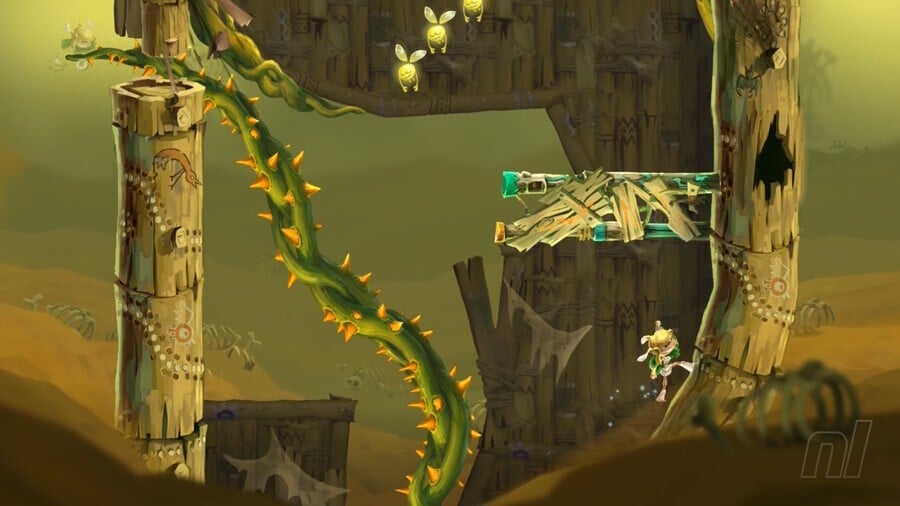
Wall jumps are so fun I’m convinced there’s something evolutionary enjoyable about sudden pivots in direction. Something that tickles my symmetry synapses with that zigzag counterflow. Especially when you have to hold into the wall as you press jump like you’re willing the wall to become floor.
Rayman Legends is brilliant because if given a lip at the base of a wall, you run up it like it’s floor and keep running as the wall curves to become ceiling, then jump to flip down before gravity catches on.
The level Up, Up and Escape is just brilliant, an almost-smartphone narrow upward level of growing vines and breakable walls that is pure movement, with a clear through-line drawn in bright lums and enough give in the controls to feel like an expressive pleasure just to participate in this upside-downside-leftside-rightside dance.
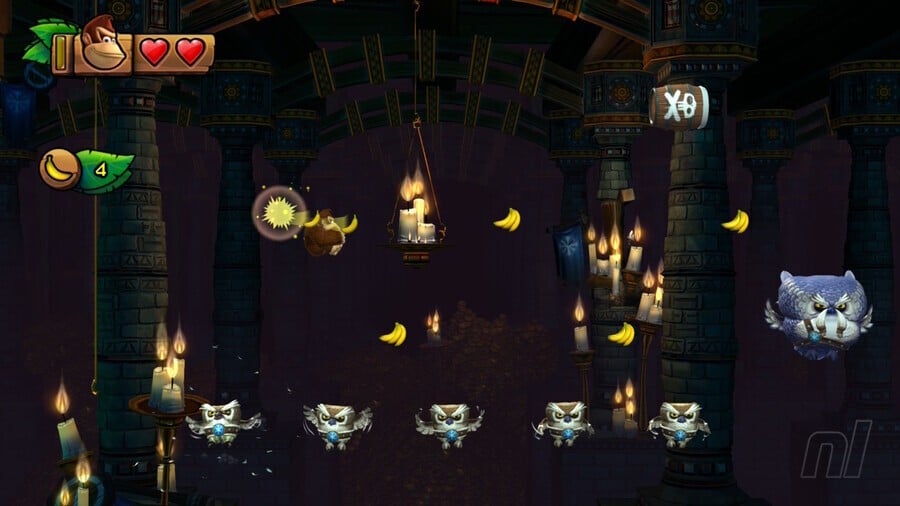
In real life, jumping on people is not a good way to attack. It’d be quite hard to cause serious damage (though I’m sure there are some statistics about how many people do per year.)
In games, though, jumping on enemies is just the best, especially when you can hold jump to bounce higher, like putting a stress on the bounce.
It took me a while to warm up to Tropical Freeze. But one level can make you fall in love and for me it was Bopopolis. A level that asks ‘What If The Whole Level Is Enemies?’ and then scores it to DK Island Swing.
The floor isn’t lava, it’s owls and walruses and penguins, and each one is a spring and a choice between stressed or normal jumps and combinations that feel like movement music. This is pure bouncing, exacting, platforming euphoria. I’d pay full price for this level alone.

Disclaimer: this list is not definitive and is subjective, and please don’t get angry at me.
I know double-jumps are a beloved thing in games. I can confirm that they are, indeed, awesome. Maybe you count flutter jumps as double jumps and so love Yoshi’s Story because of how good the giant sneakers look as you do them (I would agree with this). Maybe you like the satisfying one-up one-down harmony of Klonoa’s ball-slam or Bananza DK’s rocky slam dunk.
All of these are valid. But the best is Celeste. Does her dash even count? It does now!
Not only is it gloriously versatile and the core ‘ollie’ around which the game is built, it also comes out so fast and with such whoosh that the revert to normal slowness afterwards gives it that glorious sense of temporary suspension, a caught-at-the-apex pause between realities.
This is the sliver of grace in the game’s inhale-exhale flow, and I’ve just realised it’s probably also the way her lilting hair changes direction that makes it feel so good.
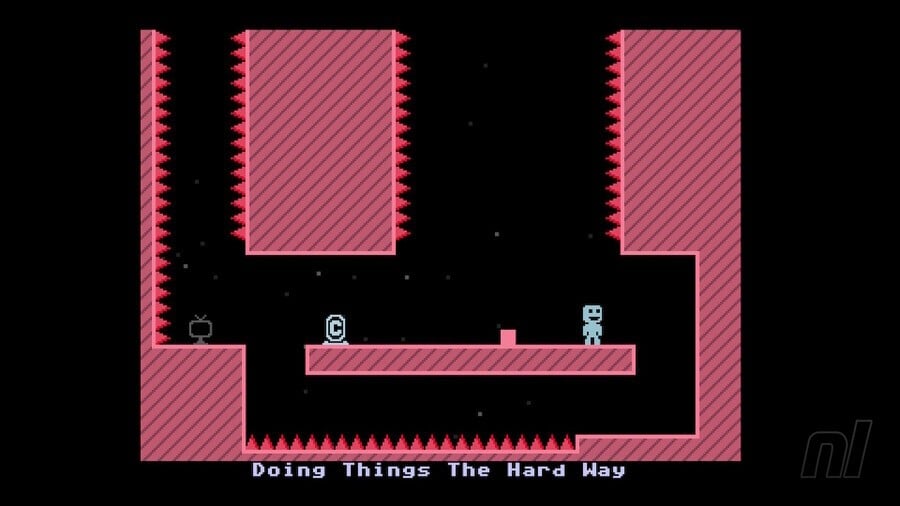
VVVVVV is built around a not-jump, where you can flip gravity on a whim and suddenly you’re upside down and the ceiling is the floor. But it also has great moments of suspended freefall, and if finessing mid-air control is the point of video game jumps, then the Vedi Vidi Vici room might be the ultimate version.
You not-jump from the floor and then are whizzing upwards into a jagged tunnel lined with spikes, having to do that glorious left-right steer-oversteer in a prolonged bending path, dying so many times and repeating so often you are less learning a sequence than tracing out a tensile line that starts to feel as real and taught as a string on a guitar.
Then you get to the top and the platform crumbles, and you realise you have to do it again, backwards. This is fun.
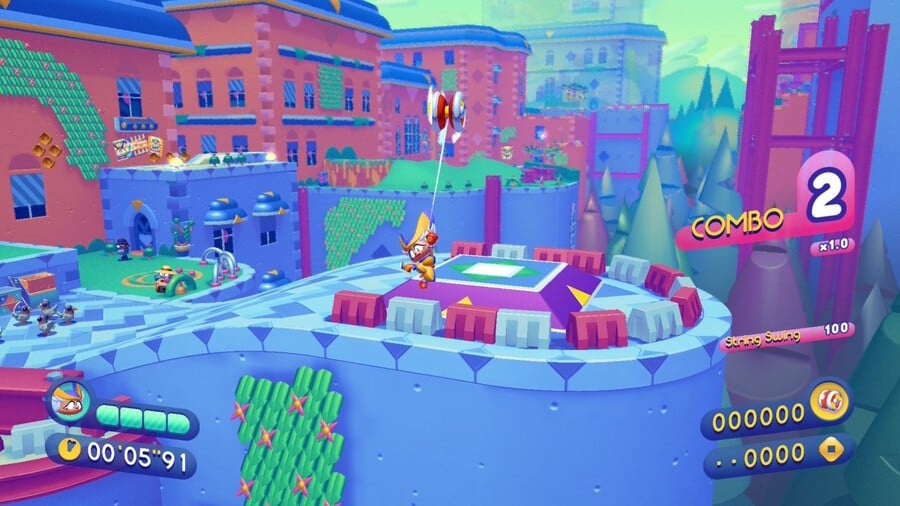
Does a swing count as a jump? Yes, I just checked (with myself).
But which is best? Bionic Commando? Spider-Man 2 on GameCube? Samus’ sometimes surprisingly loop-de-loopy one?
All of these are excellent but wrong choices – the best is Penny’s Big Breakaway, which is a game I disliked intensely until I started to play it for combos. This forces you to engage with its yo-yo delights, which means plummeting falls, at the bottom of which you unleash your yo-yo, fix a pivot point mid-air out of pure video game logic, and hold the swing the right amount of milliseconds just-so to turn all that fall suddenly into so much fling and soar. And just as suddenly, the game is gorgeous.

It’s tempting to put only the most empowering, nimble jumps in this list, but of course a jump exists in relation to the environment around it – that’s where the drama is, what defines a level’s spacing, heights, and tempo of movement.
In the Core Design Tomb Raider games, Lara’s jump is architecture. Each one is considered, angular, grid-based, with that leap back, line-up, and long press before the edge. It changes your dynamic with the world and emphasises the ruins of Peru or St Francis’ Folly as ancient places themselves, solid, heavy, imposing.
Also, she has that cool swan dive.
Jumping In Character
Some games seem to want you to roleplay seriousness, making me suddenly walk slowly to admire some boring worldbuilding. I think they think this is more sophisticated or realistic or something?
Which is weird because Fumito Ueda and his team make the most beautiful games without sacrificing movement and playability. Instead, they just make the jumps really flaily.
In ICO, the jump comes out quick and fast with a triangle press, but looks ungainly and from height lands with a tumbling thwacks of sandals on that sad-castle stone. Wander’s jump has a power meter like playing a golf game when gripping onto a colossus and a general woolly desperation to it. And in The Last Guardian, the boy’s run is all boyish eagerness and his jump a mess of fabric and unselfconscious intent.
These are jumps but also character and personality.

Mario 64’s fat foot kick (because his foot goes fat) feels great because it lets you pop the jump. It cancels out your momentum and arc and lets you do a mid-air tweak to your landing.
Downwell certainly isn’t the only game to use shooting to pop jumps and keep you suspended (everyone play Cave Story, please!) but it is probably one of the few that makes it The Whole Game.
Every jump is popped! The falling is too fast, so all you can do is constantly, carefully pop your jump, metering out your gunboot ammo to give you enough small-cough interrupts to not plummet into spikes, baddies, a stray bone thrown.
Is this bit strictly the jump? No. Is it a brilliant use of gradually escalating tension using bullets as control and enemies as bounces in a sped-up, constant freefall after a jump? Yes. (Try it in Tate mode on Switch!)
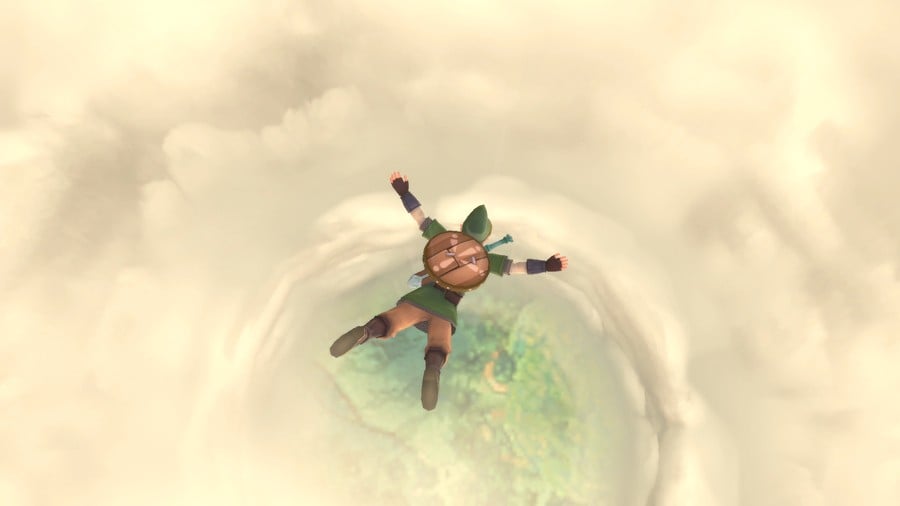
Do dolphins ‘leap’ or ‘jump’ from the water? Either way, it counts. You can load up Ecco The Dolphin right now and have fun angling your exits from the water to curve into the air and splash back down in a glorious natural arc! (Before it gets fiddly later on.)
Is Majora’s Mask’s Zora transformation the best example because of the brilliantly fluid, spiralling swimming and the seamless roll on landing? I’m so glad you asked! The answer is no.
And is Tony Hawk’s ramp jump an urban dolphin leap? All about angle and line-up instead of inertia control? That’s probably a ‘no’ too, if I’m honest.
Anyway, the best is Skyward Sword because of the motion-control subtlety of aiming your exit and the swirling whoosh accentuated by a left-hand shake that will get you just above the surface of water and onto a gorgeous pastel lily pad outside the Ancient Cistern temple. This is the best.
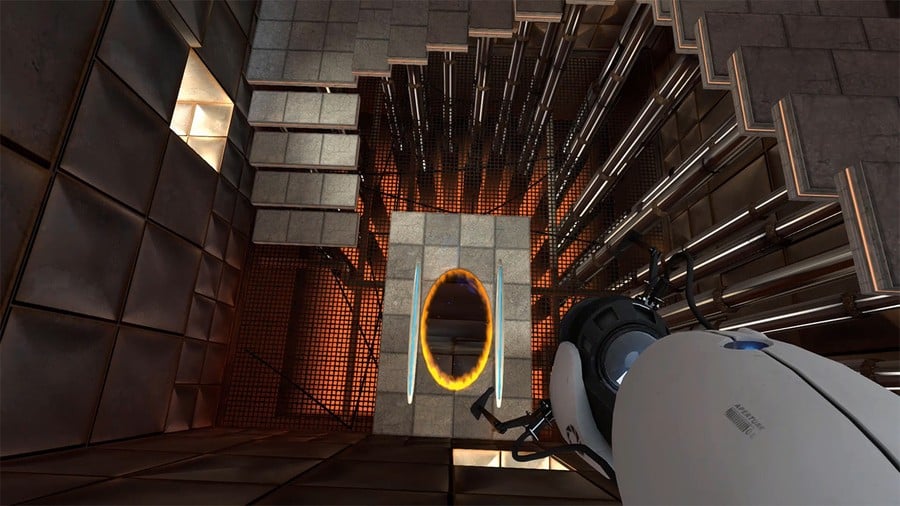
First-person jumping makes for virtuoso moments like a mid-arc snipe in Halo or Quake 3 Arena. Moving target and moving gunman? It’s horseback archery for the digital age.
But another thrill of first-person jumping is to point your face at something and then jump down to rush towards it. That plunging face-downwards thrill, like the downslope of a rollercoaster.
This might be an enemy you are leaping onto to do a stealth kill in Dishonored. Or in the case of Portal, it could be to go through the floor, loosing off a portal at the last moment to conserve your momentum so that down is now forward and you’re flying out of an exit prepared 50 metres above.
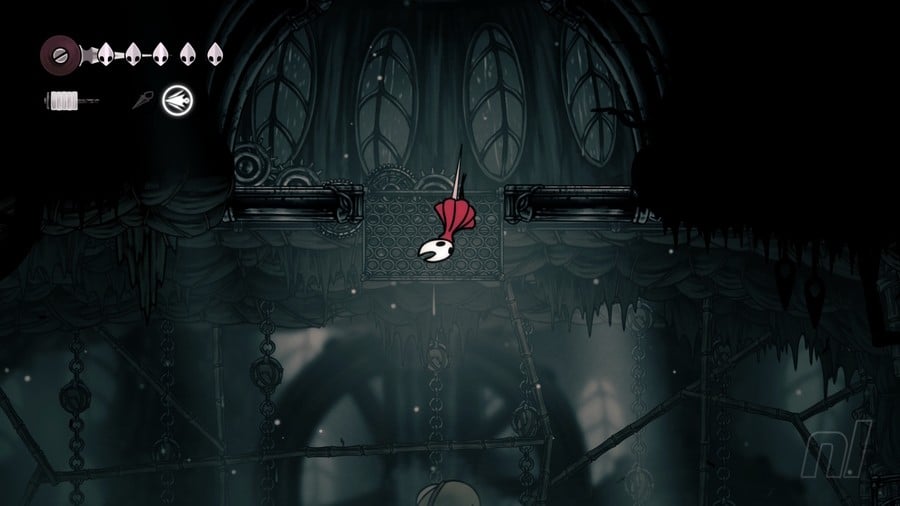
Spinning and somersaulting makes jumps better. It adds flourish and poetry to the otherwise mechanical need to get to the next platform. This is why even an auto-jump can feel badass as Link does that first cartwheel through the air in Majora’s Mask. It also gives a sense of power and movement. In Super Metroid or Crash Bandicoot you can jump straight, but it’s that mid-air tumble that lets you know you’re really moving forward.
This also feels like an engagement with elegance. Most recently, there’s the feeling of grace as Hornet does those balletic twizzles when slicing the bounce-flowers in Silksong (dear game developers, if you make a game with spinning movements and whoosh sounds, I will buy it).
Silksong is just the latest example of games that feel like moving with serifs, jumping in cursive.
What Does A Jump Even Sound Like?
I’ve just tried myself, now, and it turns out there’s a forced diaphragmatic Ugh! It’s built in, it seems. I did not, however, make a whoosh sound because I am not a plane.
As iconic as Mario’s boing and Sonic’s woop jump sounds are, I’m partial to a vocal hut! and a good swoosh sound.
It’s the sounds that can make a jump feel dynamic, responsive and satisfying.
Mirror’s Edge 2D is made by the same creator as the Fancy Pants Adventures and is (incredibly) still playable here in your browser. Faith still has fantastic 2D animations, including the sprintiest, most powerful-looking run, and not only can you roll after landing every jump, the jumps themselves are accompanied by a perfect fwoosh that sounds part air-rush, part trouser fabric crumple, and wholly accentuates the rooftop-running open-air parkour fluidity. Try it on your lunch break!
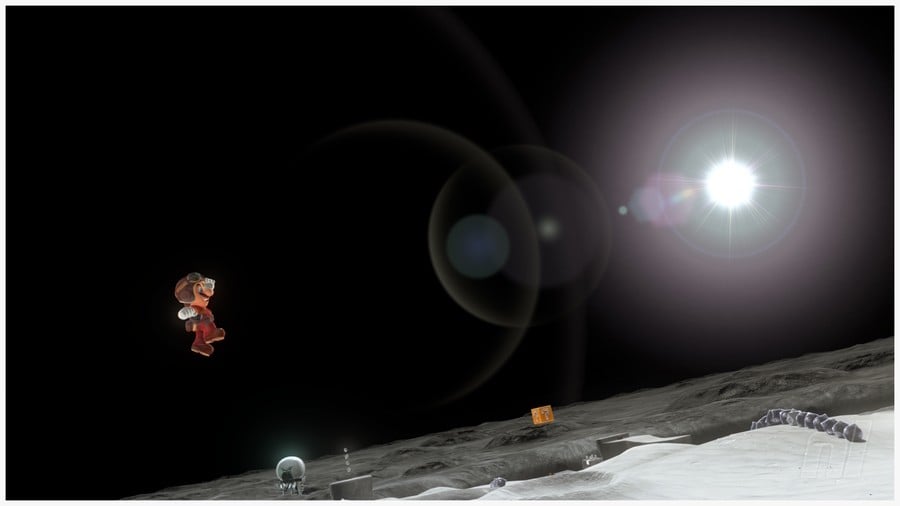
A real journey needs a sense of change, of leaving the normal and arriving somewhere new. Odyssey is a game full of surprises and novelty, then just before the end there is calm and silence and awe – visually, aurally, and mechanically with the jump.
Mario’s jump feel is so ingrained by this point, but then suddenly we’re on the moon and practically untethered, one newton away from Galaxy-style disengagement.
Each jump is now a majestic/comic (depending on how many times you choose to quickly spin Mario mid-air) soaring thing. It’s the calm before the storm, the whole level itself basically a jump before re-landing for the finale.
Nintendo knows what it’s doing, putting spring flowers here to unleash rocketting corkscrew pirouettes. And then it gives you a frog.
I could talk about jumps all day. I haven’t even gotten to the Deku Tree web jump, or that chuk! sound as you backflip in Banjo, or careening off a halfpipe into Robotnik in Casino Night Zone, or the many jumps of Smash.
But it feels fitting to finish for now with Mario, after 40 years of heart-in-your-mouth-as-you-miss-the-edge-again fun. But also, 40 years of running and jumping in video games as a way to delight in the sheer joy of movement, along the ground and through the air.
